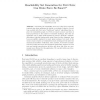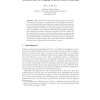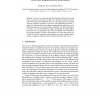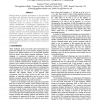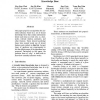499 search results - page 39 / 100 » Why neighbor-joining works |
APN
2004
Springer
14 years 3 months ago
2004
Springer
Generating the reachability set is one of the most commonly required step when analyzing the logical or stochastic behavior of a system modeled with Petri nets. Traditional “expl...
ECML
2004
Springer
14 years 3 months ago
2004
Springer
Although tabular reinforcement learning (RL) methods have been proved to converge to an optimal policy, the combination of particular conventional reinforcement learning techniques...
GECCO
2004
Springer
14 years 3 months ago
2004
Springer
Abstract. We derive a continuous probability distribution which generates neighbours of a point in an interval in a similar way to the bitwise mutation of a Gray code binary string...
HICSS
2003
IEEE
14 years 3 months ago
2003
IEEE
Moving around our physical environment, we are surrounded and interact with information that exhorts and stimulates us to buy things. For most of us, not all of these impulses are...
IRAL
2003
ACM
14 years 3 months ago
2003
ACM
This paper proposes an algorithm for causality inference based on a set of lexical knowledge bases that contain information about such items as event role, is-a hierarchy, relevan...
